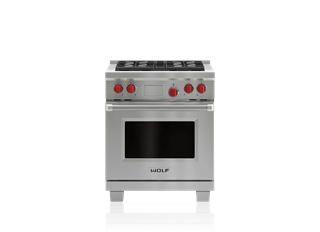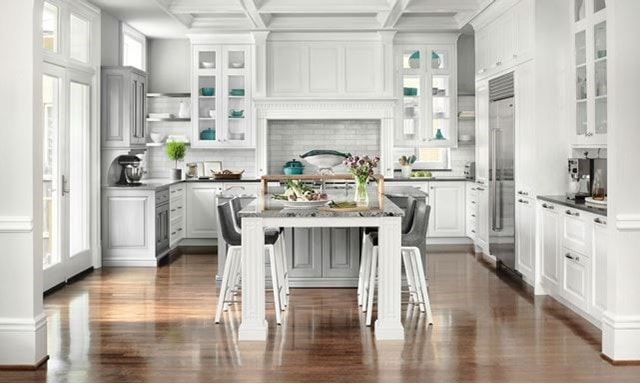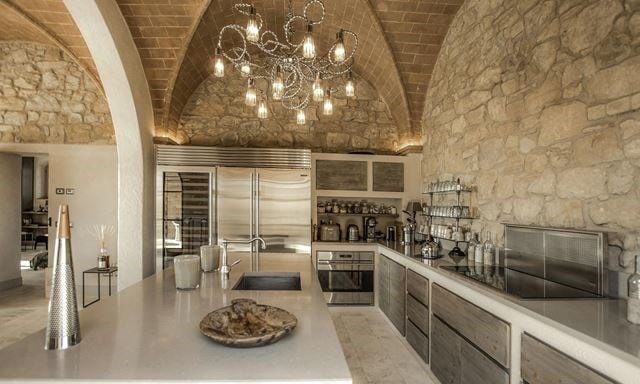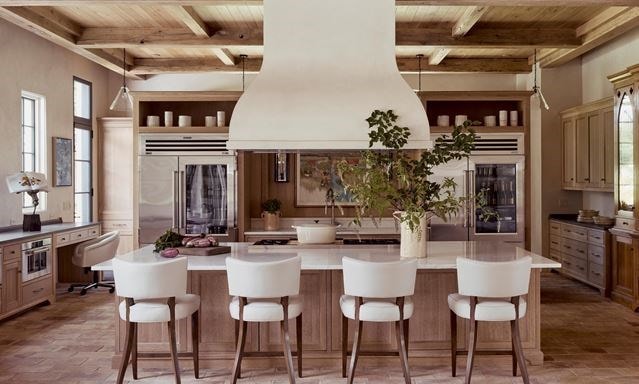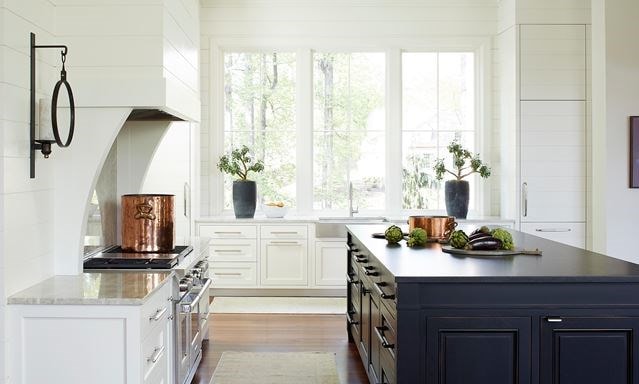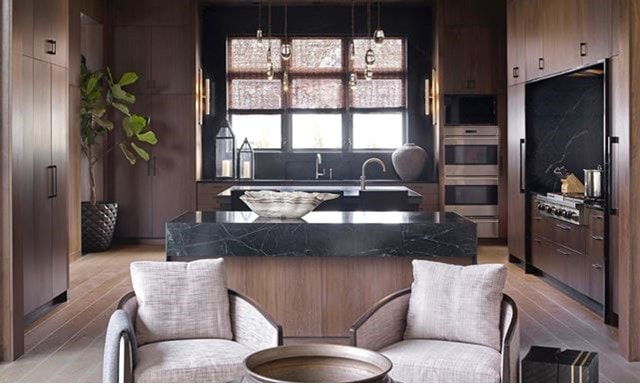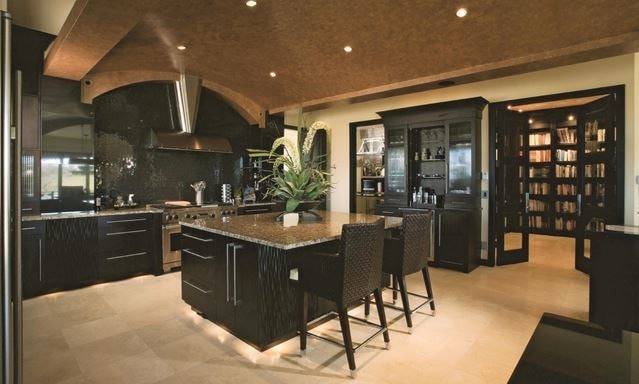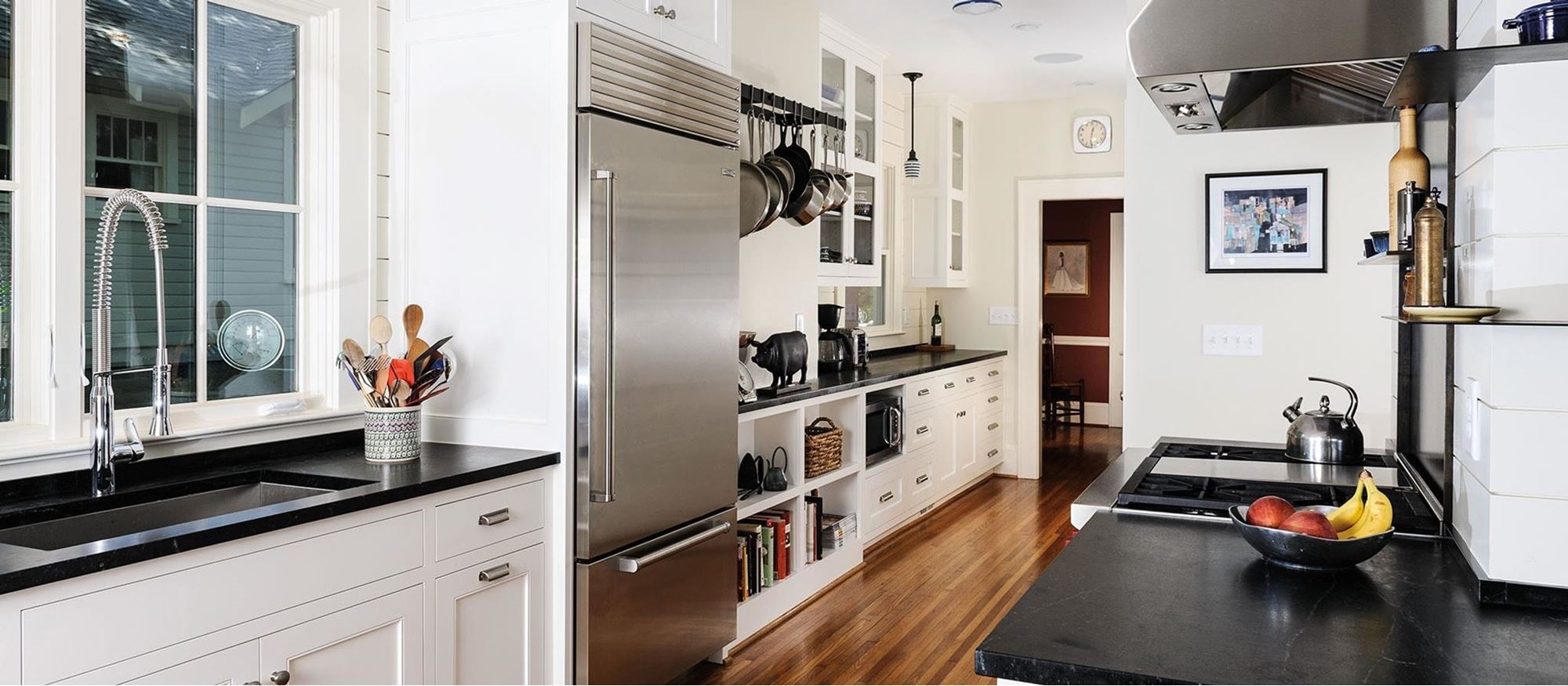
Lucky Midcentury
Regional Award Winner KDC 2006-2007
La transformation d'une cuisine sans âme en cœur de la maison permet à un couple d'universitaires de se rapprocher d'eux-mêmes, des gens et du monde dans lequel ils vivent.
La conceptrice Lesley Hayman Sager se souvient de sa cliente exprimant ce qu'elle ressentait dans son ancienne cuisine : "Je déteste tellement cette cuisine que lorsque j'y suis, j'ai l'impression de ne pas exister." Les propriétaires, Melanie et David, professeurs de sciences politiques à l'université du Wisconsin à Madison, étaient tellement rebutés par leurs armoires en chêne banales et leur palette de couleurs monochromes qu'ils n'ont pas reçu beaucoup pendant les huit années où ils ont vécu dans leur demeure du milieu du siècle, par ailleurs grandiose, située dans l'un des quartiers les plus historiques de Madison.
Inspirée par les fréquents voyages de Melanie en Asie dans le cadre de ses études, ainsi que par les lignes épurées de la maison, les cloisons japonaises existantes et les poutres apparentes au plafond, Mme Sager a donné à la cuisine une ambiance d'artisanat d'art asiatique, et a même eu recours à la méthode japonaise de conception par unité. La règle selon laquelle les mesures de chaque élément, tiroir et armoire, sont divisibles par trois—, un nombre considéré comme de bon augure dans la culture chinoise—, a permis façonner l'ensemble de l'agencement selon une esthétique propre et ordonnée. "C'est une universitaire, elle est très cérébrale", explique Mme Sager. "Alors quand elle revient sur terre, elle a besoin d'espace pour s'organiser!"
Les bords des armoires en érable peint sont légèrement poncés pour rappeler les meubles asiatiques d'époque, et les façades des armoires supérieures sont fabriquées en simple papier Shoji, inséré entre deux panneaux de verre. Le motif subtil et la brillance du dosseret au-dessus des comptoirs sont en fait une combinaison d'un verre à faible dispersion et de laque rouge très brillante. Composée de rouge, de noir et de blanc, la palette est adoucie par un sol en bambou chaleureux et par le réfrigérateur Sub-Zero en acier inoxydable, que Mme Sager félicite pour sa capacité à s'intégrer dans les armoires et à préserver l'esthétique sereine de la pièce. L'installation de l'évier dans l'îlot, loin de la cuisinière mixte Wolf de 76 cm (30 po), permet aux deux cuisiniers de travailler ensemble en tout confort. Aujourd'hui, les universitaires partagent régulièrement l'hospitalité et la préparation des repas avec des professeurs et des étudiants. L'expérience est beaucoup plus décontractée et interactive— et chaque rencontre se déroule sous les meilleurs auspices.
In this kitchen
Shop the products featured in this kitchen.
This kitchen does not feature any Sub-Zero products.







